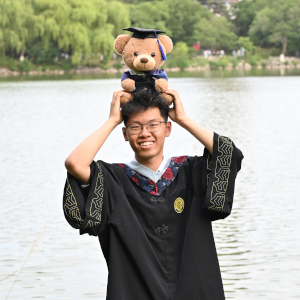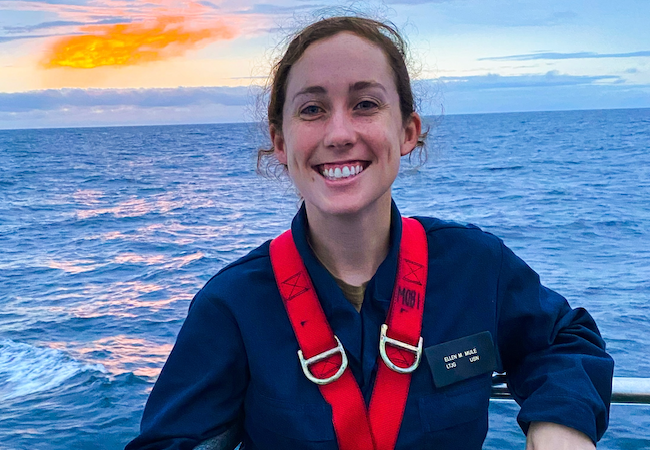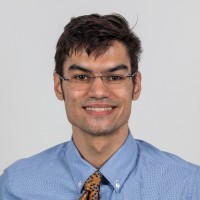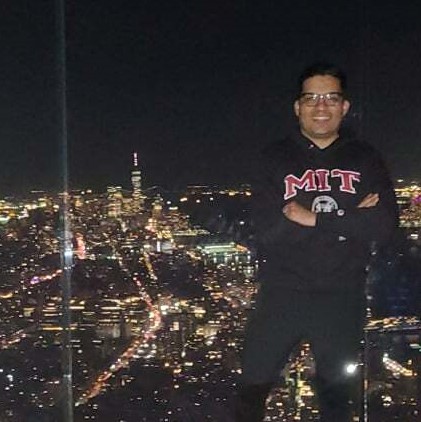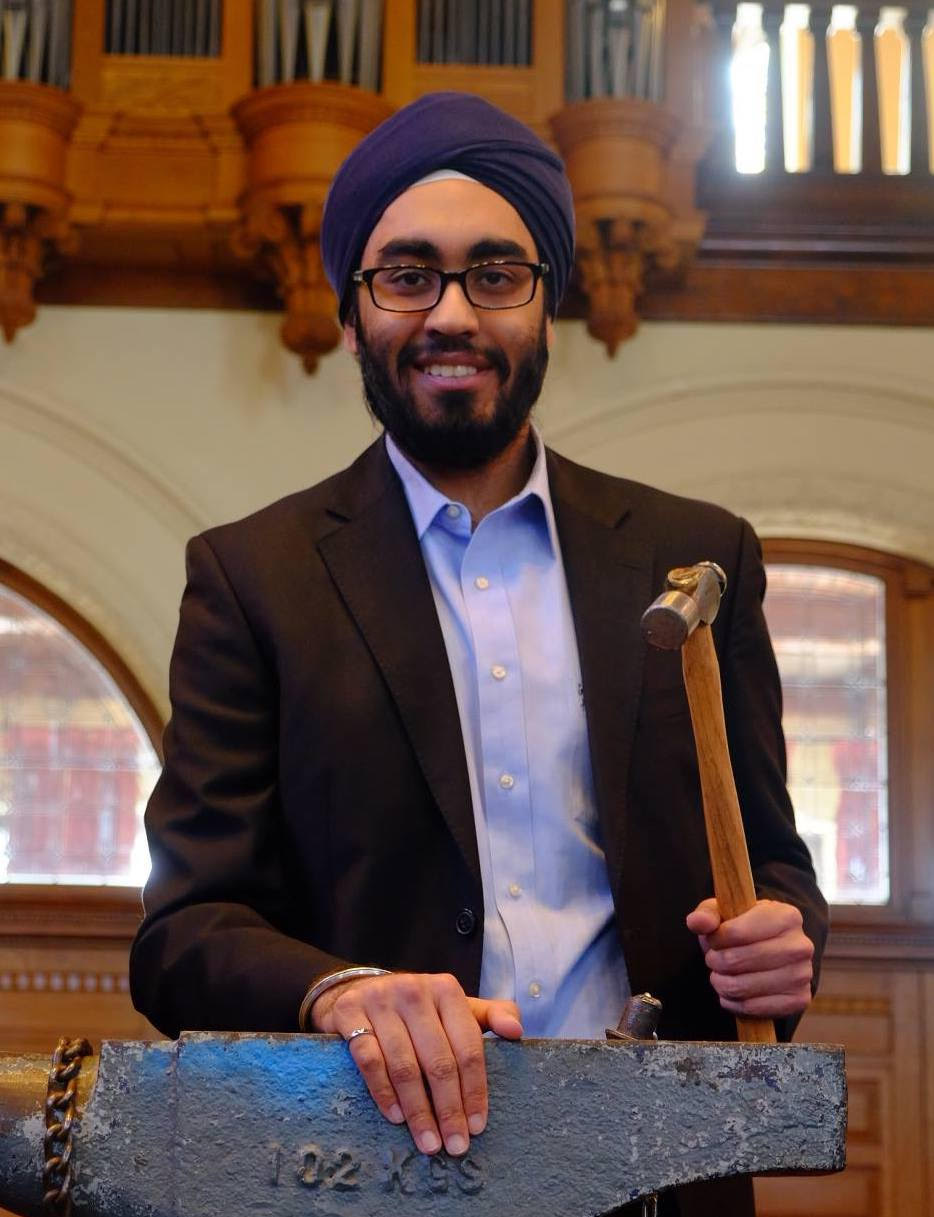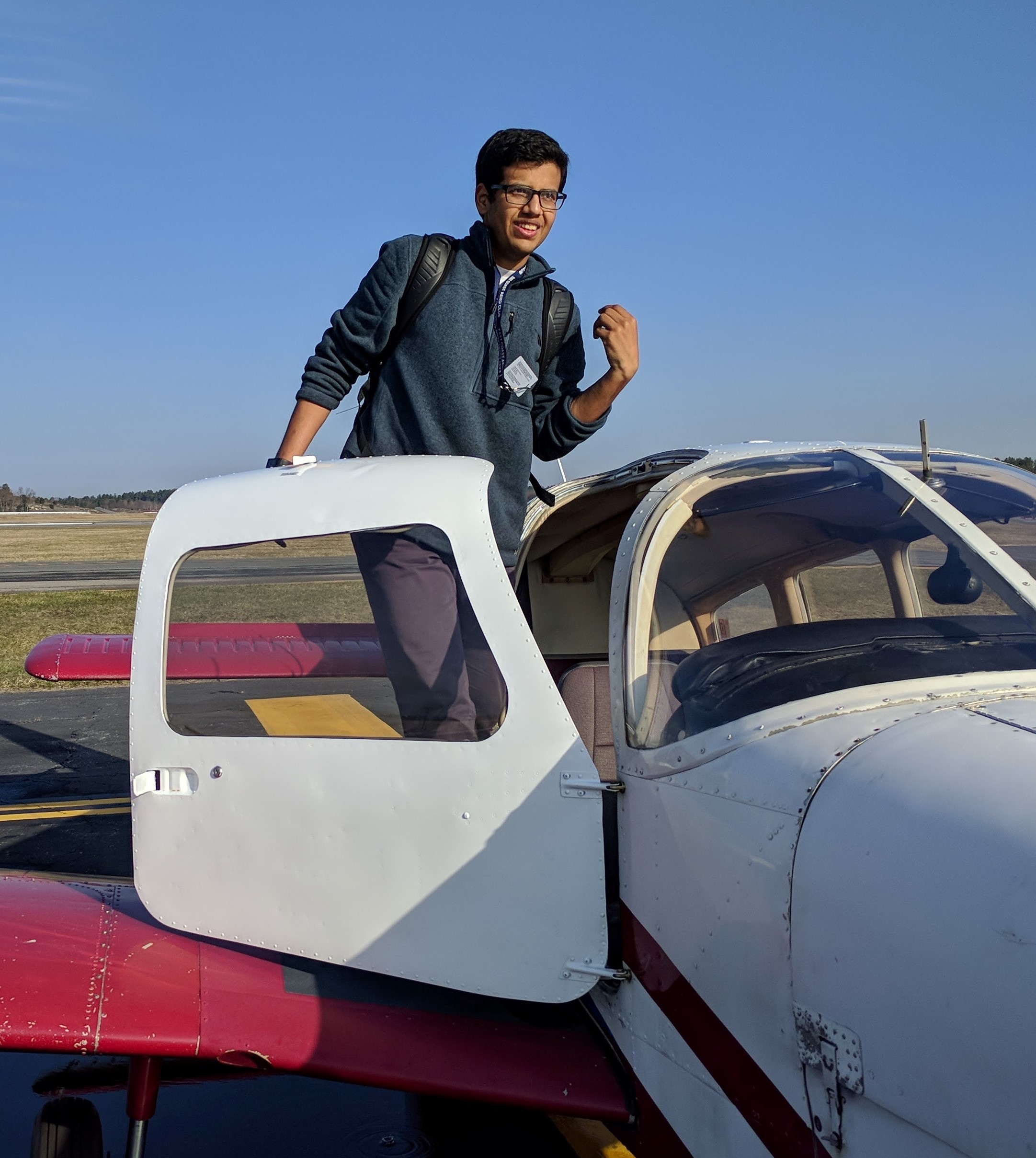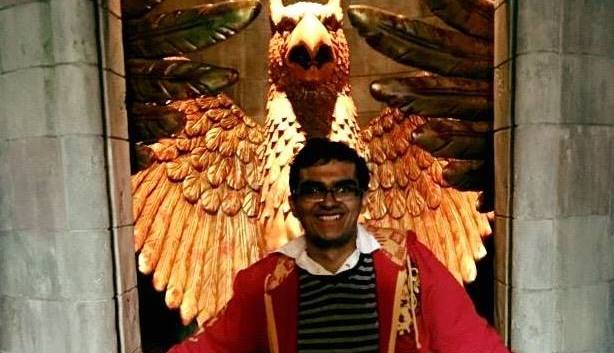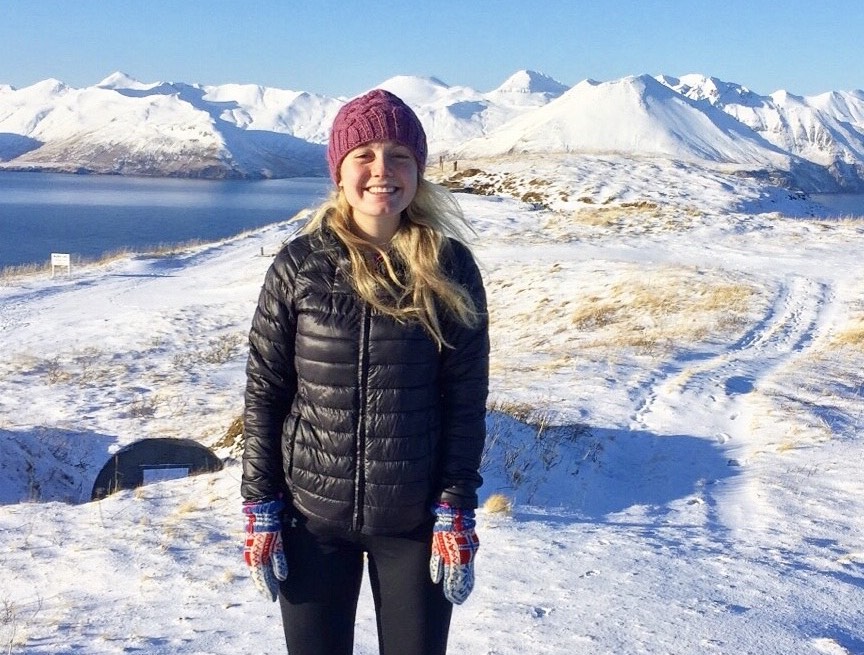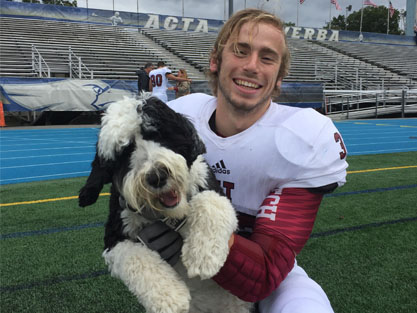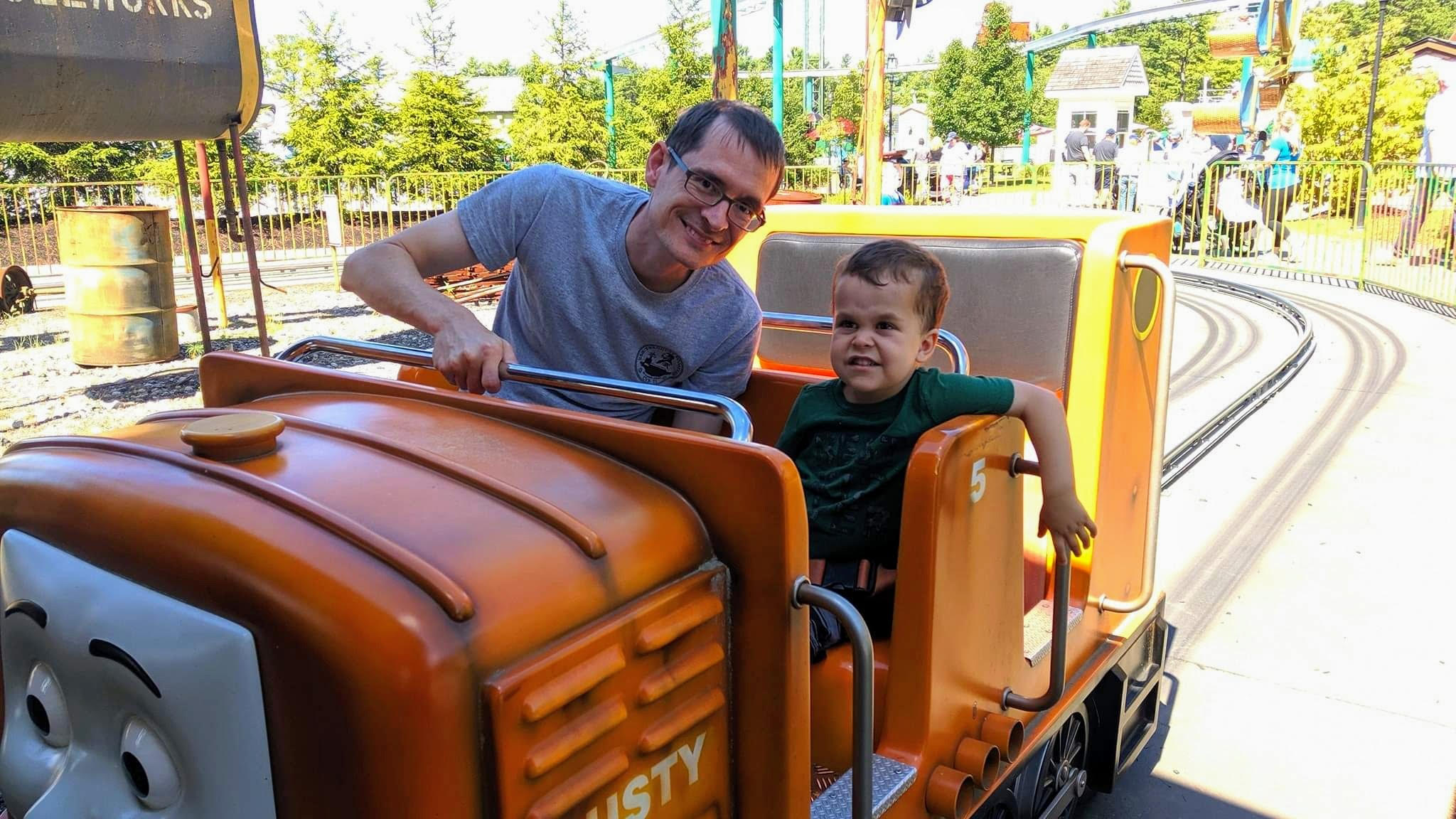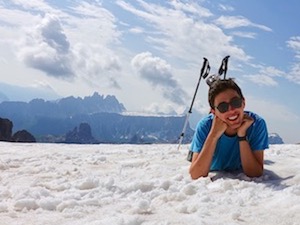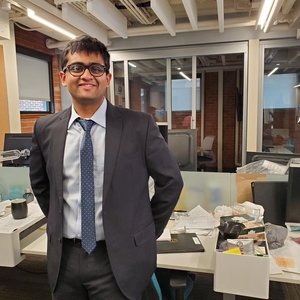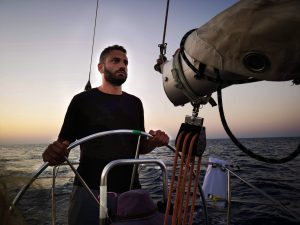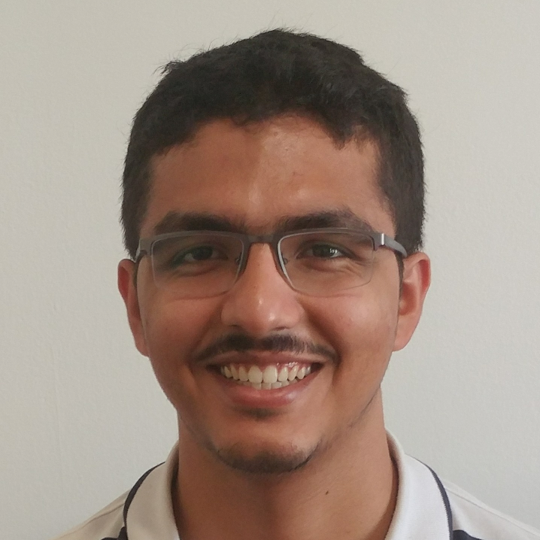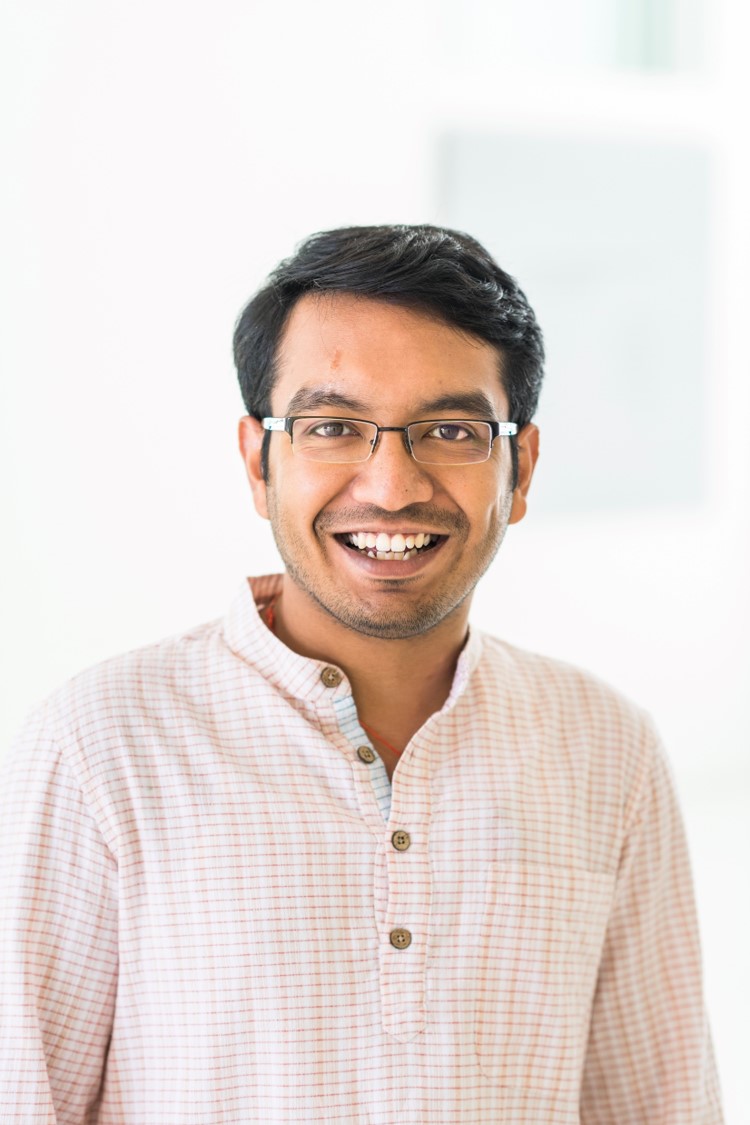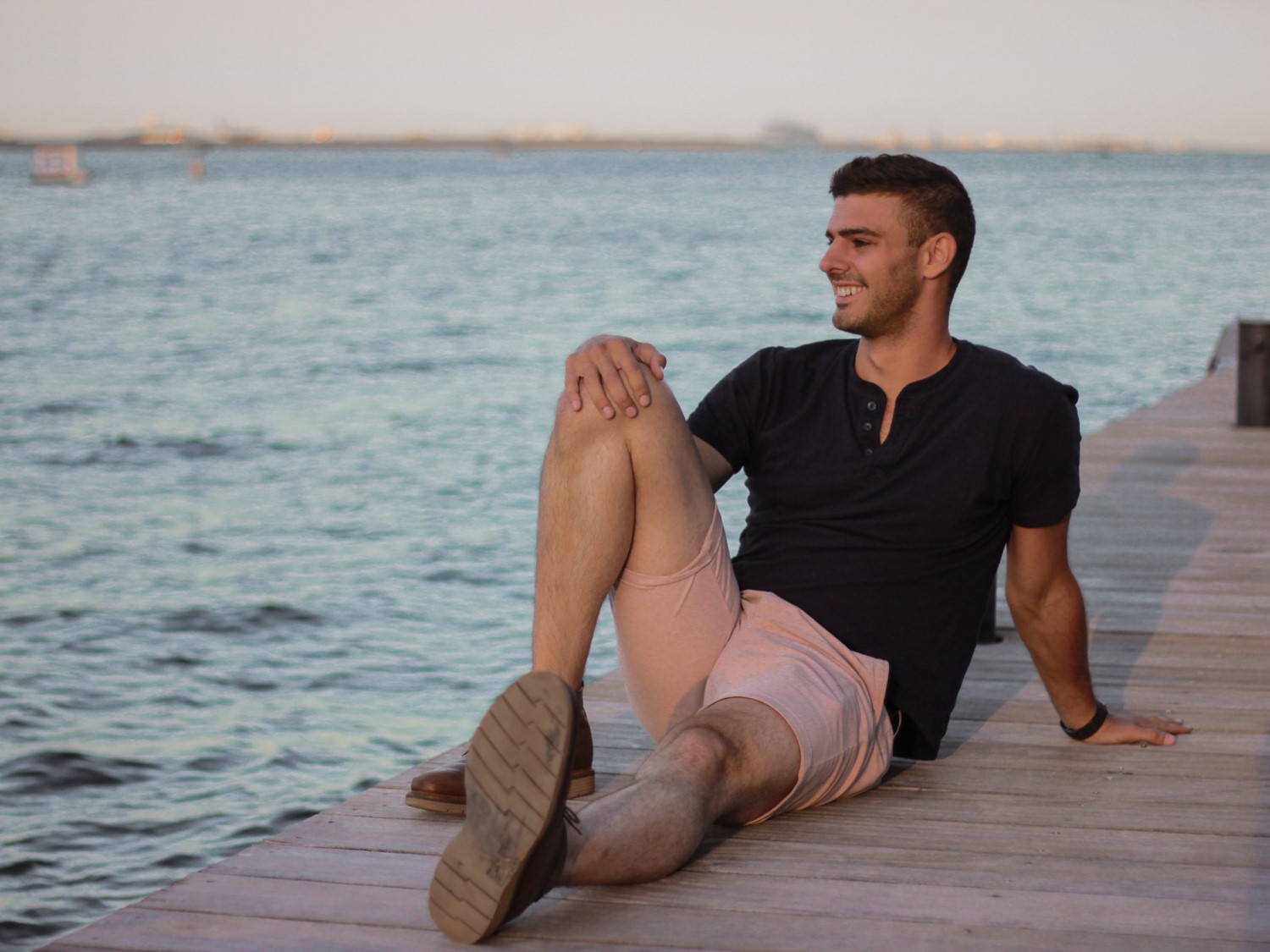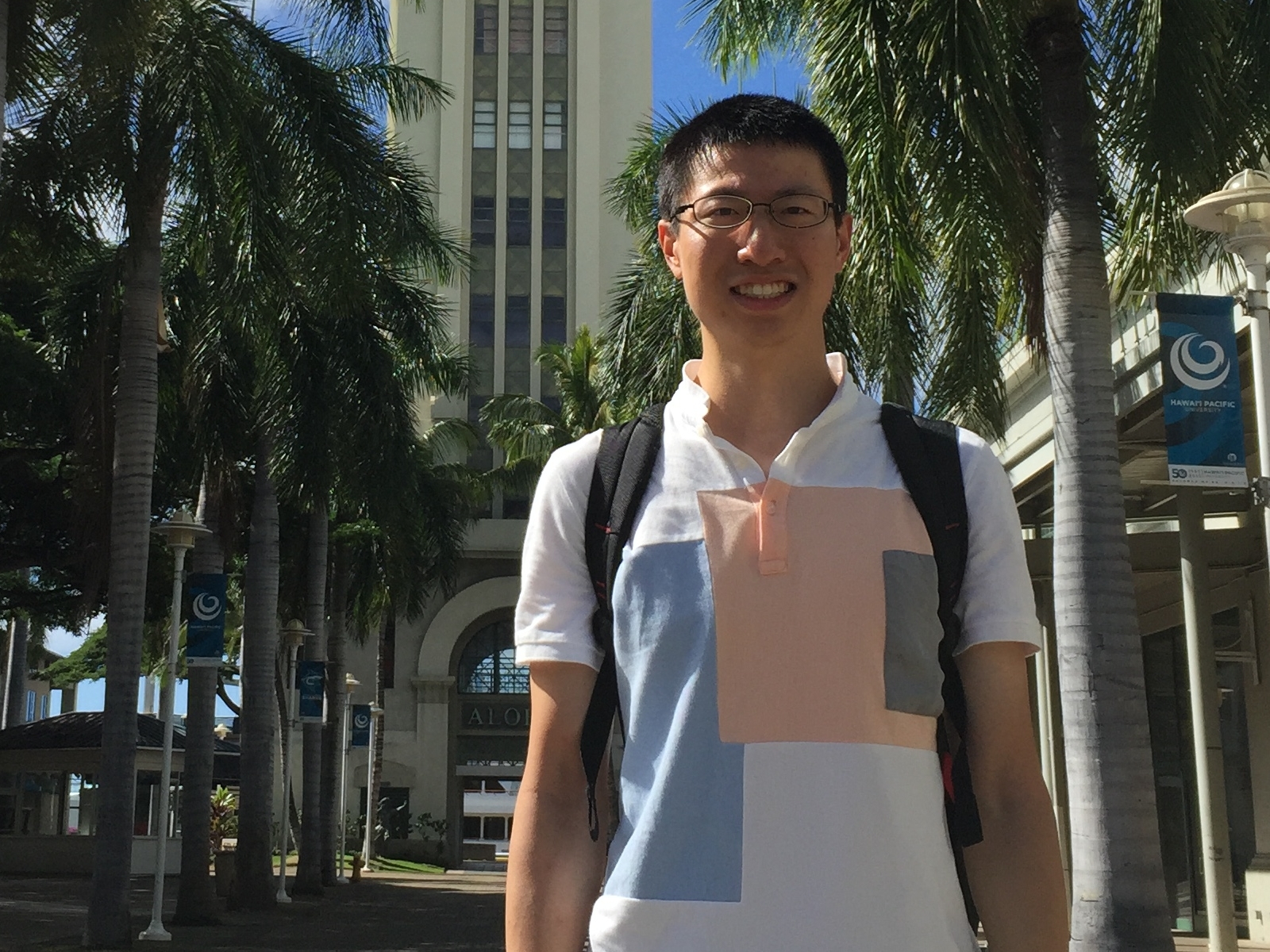Ruizhe joined MSEAS in fall 2023 as an SM student. His current research is on modeling submesoscale physics and dynamics in the ocean. Prior to joining MIT, Ruizhe received his Bachelor’s with Honors in Theoretical and Applied Mechanics from Peking University, China. Apart from academia, he loves movies, hiking, and going to the gym to run and lift weights.

Loading content ...
Ellen Marie Mule
Ellen is a graduate student in the MIT-WHOI Joint Program for Applied Ocean Science and Engineering. A native of Alexandria, VA, she graduated from MIT with a bachelor’s degree in Mechanical and Ocean Engineering in June of 2018. As an undergrad, Ellen was a four-year member of the varsity field hockey team. Following graduation, she commissioned into the United States Navy and served aboard the USS VIRGINIA (SSN 774), a fast-attack submarine based in Portsmouth, NH and Groton, CT. Outside of academics, she enjoys running, cycling, and snowboarding.
Ellery Rajagopal
Alonso V. Rodriguez
Alonso V. Rodriguez joined the MSEAS group in Fall 2021. He will be focusing on applying the Dynamically Orthogonal Primitive Equations (DO-PE) for realistic high-resolution stochastic ocean forecasting in domains with complicated ocean dynamics to enabling extensive forecast ensembles. He holds a bachelor’s from the New Jersey Institute of Technology. Outside school, Alonso enjoys riding his bike and traveling to recondite places.
Manmeet Singh Bhabra
Tony Ryu
Chinmay Kulkarni
- Advanced Lagrangian Predictions for Hazards Assessments (NSF-ALPHA)
- Red Sea Initiative
- Digging Deep: An integrated approach for assessing the impacts of deep-sea mining
- Long-duration Environmentally-adaptive Autonomous Rigorous Naval Systems (LEARNS)
- Northern Arabian Sea Circulation – autonomous research: Optimal Planning Systems (NASCar-OPS)
- Kulkarni, C.S., P.J. Haley, Jr., P. F. J. Lermusiaux, A. Dutt, A. Gupta, C. Mirabito, D.N. Subramani, S. Jana, W.H. Ali, T. Peacock, C.M. Royo, A. Rzeznik, and R. Supekar, 2018. Real-Time Sediment Plume Modeling in the Southern California Bight. In: Oceans ’18 MTS/IEEE Charleston, 22-25 October 2018.

- Dutt, A., D.N. Subramani, C.S. Kulkarni, and P. F. J. Lermusiaux, 2018. Clustering of Massive Ensemble of Vehicle Trajectories in Strong, Dynamic and Uncertain Ocean Flows. In: Oceans ’18 MTS/IEEE Charleston, 22-25 October 2018.

- Ferris, D.L., D.N. Subramani, C.S. Kulkarni, P.J. Haley, and P.F.J. Lermusiaux, 2018. Time-Optimal Multi-Waypoint Mission Planning in Dynamic Environments. In: Oceans ’18 MTS/IEEE Charleston, 22-25 October 2018.

- Coulin, J., P. J. Haley, Jr., S. Jana, C.S. Kulkarni, P. F. J. Lermusiaux, T. Peacock, 2017. Environmental Ocean and Plume Modeling for Deep Sea Mining in the Bismarck Sea. In: Oceans ’17 MTS/IEEE Anchorage, 1-10, 18-21 September 2017.

- Lermusiaux, P.F.J., P.J. Haley Jr., S. Jana, A. Gupta, C.S. Kulkarni, C. Mirabito,
W.H. Ali, D.N. Subramani, A. Dutt, J. Lin, A. Y. Shcherbina, C. M. Lee, and A. Gangopadhyay, 2017. Optimal Planning and Sampling Predictions for Autonomous and Lagrangian Platforms and Sensors in the Northern Arabian Sea. Oceanography 30(2):172–185, https://doi.org/10.5670/oceanog.2017.242.

- Lermusiaux, P.F.J., D.N. Subramani, J. Lin, C.S. Kulkarni, A. Gupta, A. Dutt, T. Lolla, P.J. Haley Jr., W.H. Ali, C. Mirabito, and S. Jana, 2017. A Future for Intelligent Autonomous Ocean Observing Systems. The Sea. Volume 17, The Science of Ocean Prediction, Part 2, J. Marine Res. 75(6), pp. 765–813. https://doi.org/10.1357/002224017823524035

- Edwards, J., J. Smith, A. Girard, D. Wickman, P.F.J. Lermusiaux, D.N. Subramani, P.J. Haley, Jr., C. Mirabito, C.S. Kulkarni, and,
S. Jana, 2017. Data-driven Learning and Modeling of AUV Operational Characteristics for Optimal Path Planning.
In: Oceans ’17 MTS/IEEE Aberdeen, 1-5, 19-22 June 2017, DOI: 10.1109/OCEANSE.2017.8084779

- Subramani, D. N., P. F. J. Lermusiaux, P.J. Haley, Jr., C. Mirabito, S. Jana,
C. S. Kulkarni, A. Girard, D. Wickman, J. Edwards, J. Smith, 2017. Time-Optimal Path Planning: Real-Time Sea Exercises. In: Oceans ’17 MTS/IEEE Aberdeen, 1-10, 19-22 June 2017, DOI: 10.1109/OCEANSE.2017.8084776

Aman Jalan
Clara Dahill
I joined MSEAS in the fall of 2020, pursuing a Masters in Ocean Engineering (SMOE). I am currently an active duty officer in the US Coast Guard, specializing in engineering. I received my Bachelor’s degree in Civil Engineering from the US Coast Guard Academy in Connecticut, where I focused on coastal engineering and stormwater systems. Before MIT I served two tours in Honolulu, HI, as a Naval Engineer-in-Training on Coast Guard ships that patrolled the Pacific Ocean from the Galapagos to the Arctic Circle. I love the ocean and enjoy surfing, free diving, sailing, and paddleboarding.
Zach Duguid
Zach is a graduate student in the MIT-WHOI Joint Program for Applied Ocean Science and Engineering. He received his Bachelor’s degree in Aeronautics and Astronautics at MIT in June 2018. With MSEAS, Zach’s research focused on the intersection of numerical ocean modeling and the guidance of autonomous vehicles. Aside from research, Zach enjoys staying active by cycling, skiing, and playing basketball. As an undergraduate, he played varsity football for four years as a linebacker and defensive back.
Jacob Heuss
Aaron Charous
Aaron joined MSEAS in the fall of 2019, starting his masters in Computational Science & Engineering (CSE) with plans to pursue a PhD in MechE-CSE. Broadly, his interests span stochastic differential equations and signal processing. He has begun focusing on numerical solutions to the acoustic wave equation in the presence of uncertainty in addition to Bayesian inference for acoustic inverse problems (see DEEP-AI). Furthermore, he works on developing and improving reduced-order modeling techniques by incorporating differential geometry for applications in uncertainty quantification. Before coming to MIT, Aaron graduated with a Bachelor of Science from Brown University, double concentrating in applied mathematics and engineering, where he researched terahertz optics phenomena. Outside of academia, he enjoys running, water skiing, hiking, and low-level soccer.
Aditya Ghodgaonkar
Aditya completed his Bachelor’s in Mechanical Engineering at R.V. College of Engineering, Bangalore (2017) before moving to Purdue University to pursue his M.S in the same field. Upon graduating from Purdue in 2019, he joined MIT to pursue his Ph.D. in Mechanical Engineering. His previous work at Purdue focused on the development of numerical tools for investigating the self-similar propagation of low-Reynolds number gravity currents for geophysical applications. Presently his research interests lie in the areas of numerical methods and high-performance computing. Beyond research, Aditya enjoys reading, trekking, cycling, and would like to get involved in activities such as sailing, kayaking, and rowing.
Kyprianos Gkirgkis
Manan Doshi
Abhinav Gupta
- Lermusiaux, P.F.J., D.N. Subramani, J. Lin, C.S. Kulkarni, A. Gupta, A. Dutt, T. Lolla, P.J. Haley Jr., W.H. Ali, C. Mirabito, and S. Jana, 2017. A Future for Intelligent Autonomous Ocean Observing Systems. The Sea. Volume 17, The Science of Ocean Prediction, Part 2, J. Marine Res. 75(6), pp. 765–813. https://doi.org/10.1357/002224017823524035

- Lermusiaux, P.F.J., P.J. Haley Jr., S. Jana, A. Gupta, C.S. Kulkarni, C. Mirabito, W.H. Ali, D.N. Subramani, A. Dutt, J. Lin, A. Y. Shcherbina, C. M. Lee, and A. Gangopadhyay, 2017. Optimal Planning and Sampling Predictions for Autonomous and Lagrangian Platforms and Sensors in the Northern Arabian Sea. Oceanography 30(2):172–185, https://doi.org/10.5670/oceanog.2017.242.

Wael H. Ali
- Surface Dynamic Uncertainty Characterization and Transfer (S-DUCT)
- Precision Ocean Interrogation, Navigation, and Timing (POINT) POSYDON-MIT
- Red Sea Initiative
- Kulkarni, C.S., P.J. Haley, Jr., P. F. J. Lermusiaux, A. Dutt, A. Gupta, C. Mirabito, D.N. Subramani, S. Jana, W.H. Ali, T. Peacock, C.M. Royo, A. Rzeznik, and R. Supekar, 2018. Real-Time Sediment Plume Modeling in the Southern California Bight. In: Oceans ’18 MTS/IEEE Charleston, 22-25 October 2018.

- Lermusiaux, P.F.J., P.J. Haley Jr., S. Jana, A. Gupta, C.S. Kulkarni, C. Mirabito, W.H. Ali, D.N. Subramani, A. Dutt, J. Lin, A. Y. Shcherbina, C. M. Lee, and A. Gangopadhyay, 2017. Optimal Planning and Sampling Predictions for Autonomous and Lagrangian Platforms and Sensors in the Northern Arabian Sea. Oceanography 30(2):172–185, https://doi.org/10.5670/oceanog.2017.242.

- Lermusiaux, P.F.J., D.N. Subramani, J. Lin, C.S. Kulkarni, A. Gupta, A. Dutt, T. Lolla, P.J. Haley Jr., W.H. Ali, C. Mirabito, and S. Jana, 2017. A Future for Intelligent Autonomous Ocean Observing Systems. The Sea. Volume 17, The Science of Ocean Prediction, Part 2, J. Marine Res. 75(6), pp. 765–813. https://doi.org/10.1357/002224017823524035

Corbin Foucart
- High-Order Multi-Resolution Multi-Dynamics Modeling for the Flow Encountering Abrupt Topography (FLEAT) Initiative
- Seamless Multiscale Forecasting: Hybridizable Unstructured-mesh Modeling and Conservative Two-way Nesting
- Foucart, C., C. Mirabito, P. J. Haley, Jr., and P. F. J. Lermusiaux, 2018. Distributed Implementation and Verification of Hybridizable Discontinuous Galerkin Methods for Nonhydrostatic Ocean Processes. In: Oceans ’18 MTS/IEEE Charleston, 22-25 October 2018.

- Deluca, S., B. Rocchio, C. Foucart, C. Mirabito, S. Zanforlin, P.J. Haley, and P.F.J. Lermusiaux, 2018. Scalable Coupled Ocean and Water Turbine Modeling for Assessing Ocean Energy Extraction. In: Oceans ’18 MTS/IEEE Charleston, 22-25 October 2018. doi:10.1109/oceans.2018.8604646

- Foucart, C., 2019. Efficient Matrix-Free Implementation and Automated Verification of Hybridizable Discontinuous Galerkin Finite Element Methods. SM Thesis, Massachusetts Institute of Technology, Mechanical Engineering, June 2019.


